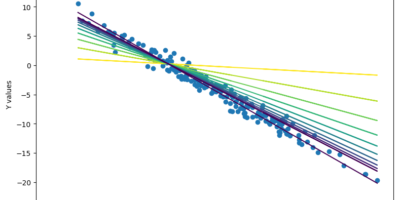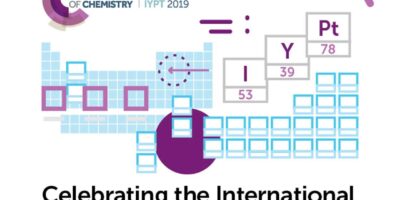The main news in the technology world in the past couple weeks was the PlayStation 4 reveal, but Google took the opportunity in the same week to announce some updates to its ambitious Google Glass project.
Google Glass was first shown in a video last May, demonstrating some basic concepts they had been working on for a glasses-like display. It was initially assumed that Glass was a prototype of Google’s vision for the future, one of those videos that never gets released but shows that the company has an idea of how we should live in the future. At their Google I/O conference the following month, Google demonstrated a live demo of skydivers using Glass to jump down onto the presentation centre’s roof, followed by bikers who rode off the side of the building in an impressive and flashy demonstration of the technology. They then clarified that the technology was not just a prototype but that they intended on bringing a $1500 Explorer edition to developers sometime in early 2013 and a consumer version within a year afterwards.
News from Google this week suggests that they are making good on their promise and aiming to allow creative individuals to pre-order Google Glass, in addition to the developers who have already preordered, for the same $1500 price and an entry into a short competition demonstrating what you would do with the device. They have also pushed up the estimated launch date to late 2013, and said it will cost less than the $1500 charge that developers paid for pre-orders.
Google’s new video shows some updated interface and usage scenarios so people have a better idea of how the device can be used. A little soft grey rectangle sits up where the display is in the lens frame, and Glass is alerted by either lifting your head up or touching the side of the device. Once it has been alerted, commands are ordered by saying “OK Glass”, followed by what you would like the device to do. The command structure is very similar to Google Now on Android, making this seem like a natural evolution of their existing technology. Glass has so far been demonstrated to take commands on directions, voice messages, web searches, video recording, Google+ Hangouts, photos and translations. The recording feature shoots surprisingly high-quality 720p videos, an impressive feat considering the tiny frame of Glass.
Glass works by connecting to Wi-Fi networks, or by Bluetooth tethering to iOS and Android devices to make use of their cellular data. It has a GPS chip as well which may help in assisting with the integrated location services. Software features will be updated on a monthly basis once the developers start receiving their pre-orders.
The device itself has a more finalized and finished form than when we had seen it last. At first it appears to be a normal pair of glasses with a weird rectangle in the upper corner, but in most images there are no lenses. The frames come in grey, blue, black, orange and white plastic which contains all the hardware. The design allows for swappable lenses to allow for sunglass lenses or prescriptions if they are able to build the correct partnerships. Unfortunately, it is still strange enough that it could have the potential to make you feel self-conscious if you were to wear it on the street, since it has a bit of a science-fiction look. Google is apparently in talks with Warby Parker to work on the design aspect, to come up with something a little more wearable to the masses.
Google also unveiled some more traditional hardware during the same week with their new laptop, the Chromebook Pixel. Originally leaked through a video that people suspected was fake, it turned out to be Google’s first laptop made with their own hardware, running their desktop operating system Chrome OS. The 12.85 inch laptop has a resolution of 2560 pixels wide by 1700 pixels tall, giving it a pixel density of 239 pixels per inch, narrowly beating out Apple’s 13.3 inch MacBook Pro Retina display, which has a density of 227 pixels per inch.
Apple’s high-resolution laptop is the first obvious influence in the design and marketing of the Pixel, right down to the arrow key design, distinctive hinge, trackpad and profile. While it’s not Apple’s right to be the only ones with thin laptops, it would be naive to assume that Apple was not a major influence in how the laptop was built. Some improvements have been iterated on Apple’s design, like improved keyboard noise filtering when using the microphone and more rounded edges on the laptop’s body to avoid having the sides dig into your wrists.
One feature Google brings that has only primarily been seen on Windows PCs before is a touchscreen, but a demonstration from The Verge showed that even with a lightweight operating system, the scrolling is still fairly jerky. Chrome OS is also essentially Google Chrome minus the operating system, so playing your favourite games outside of ones you’d find on Facebook or Google+ (i.e. Flash games) will be out of the question. That’s great for people who only want to use those web applications, but surprise, the Pixel costs $1300, and comes with a paltry 32 GB of SSD storage.
If it’s all web-based, naturally everything is being stored on the server in your Google Drive account. You get 1TB of Google Drive storage for each user for three years free. After that though, you’d have to pay up the $50/month it costs to have the same privilege. Assuming you only expect three years from your computer, maybe the same deal will be on once your free period ends and you can get another one, but that’s an awfully high price to pay to store your files basically on your computer. The MacBook Pro it’s competing with costs only $200 more, comes with 128 GB of SSD storage, and has an OS that will actually run most of the applications you would want, plus can partition into Windows for anything that doesn’t run on it.
A Windows laptop may not necessarily come with the high-resolution screen, but you could get one with similar or better specs than the Pixel for the same price or less, and run pretty much everything you’d need. The resolution on the Pixel doesn’t really seem to be worth the investment, considering the most you’ll be getting out of it is cleaner gradients on Google’s websites and some low-intensity web games that will look a little smoother than they would have otherwise. The Pixel certainly fills a niche (however small), but the appeal of this laptop will only be fully realized if it becomes cheaper or our Internet connections can bring us richer applications and constant connections.
To wrap up their week in news, rumours have been circling that Google may be planning to follow Apple and Microsoft’s footsteps in introducing Google Stores. Where they would be is uncertain for now, but would be an ideal location to demonstrate how Glass works in person and would likely help in pushing a few Chromebooks. If this holds true, Google’s jump into hardware will be bold and risky. If it succeeds, it will certainly cement its leadership position in the technology industry for years to come.




Leave a Reply